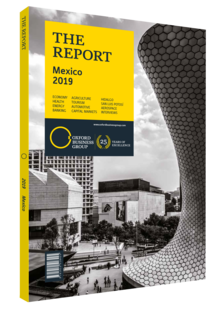A detailed look at Mexico's National Domain Extinction Law
In 2019 controversy arose over the National Domain Extinction Law, which establishes that a person who owns assets that cannot be tracked or proven to have come from a legitimate origin, or assets that are a product of illicit activities such as organised crime, kidnapping, hydrocarbons and petrochemicals crimes, human trafficking, corruption, vehicle theft and extortion, can be deprived of the rights of holding or ownership. The debate began when lawyers, academics, private sector representatives and members of Congress warned that the law could violate the right to the presumption of innocence and respect for private property.
Constitutional Question
Specifically, these concerns point to Article 20 of the constitution, which sets the principle of presumption of innocence. The new law obliges those affected to bear the burden of proof, a prohibitive weight that has been rejected for more than 100 years and termed by the country’s constitution as “diabolical evidence”. The legislation also appears to violate the due process stipulated by Article 14 and Article 20 of the Constitution and, even more notably, what is mandated by Article 35 of the law itself.
Nevertheless, one of the most important points of the new legislation is Article 227, which states that the authorities may proceed with the sale or early disposition of the assets subject to the processes of ownership termination, except for those that the authorities consider to be the object of proof. The procedure for the declaration of extinction of ownership comprises two phases. The first is the preliminary phase, in which the public prosecutor’s office is in charge of collecting evidence and notifying the possible owners of the property, and second is the judicial phase. During this phase, the same authority will formally present the case before a specialised judge. The process will be carried out through a trial open to the public and the media.
The Final Say
The domain extinction action is imprescriptible: if an asset is confiscated, the person loses it forever. The confiscated assets may be used by the state for public use or auctioned, even if they are subject to continued processes, that is, without a final ruling. Such assets may be at the disposal of the federal public administration agencies and entities, the attorney general’s office, and the governments of the federal entities and municipalities, as determined by the president’s Cabinet. This particular point has been questioned because the guidelines under which it will function are considered lax and could result in a potential discretionary use of resources.
Additionally, the non-prescription expressed in this law violates the principle of legal certainty, since the state holds the power to prosecute the defendant and their asset forever, making it necessary for them to permanently keep the vouchers, receipts and documents that support the licit acquisition of that asset since it is the defendant who has to prove the lawful origin of the asset, instead of the prosecutor having to prove its illegal origin.
Lastly, the last paragraph of Article 16 of the law casts doubts upon the legitimacy of certain precepts and may promote a general paranoia around the public prosecution of individuals since it establishes that people who contribute to the obtaining of evidence for the declaration of ownership termination can receive a compensation of up to 5% of the total amount the state obtains for the asset liquidation.
Ultimately, the National Domain Extinction Law goes against the universal rights of private property and the guarantee of legal certainty for owners and other rights holders in terms of non-retroactivity.
OBG would like to thank Maillard, Cerbón, Canudas, Argumedo, Palma y Asociados for its contribution to THE REPORT Mexico 2019.
You have reached the limit of premium articles you can view for free.
Choose from the options below to purchase print or digital editions of our Reports. You can also purchase a website subscription giving you unlimited access to all of our Reports online for 12 months.
If you have already purchased this Report or have a website subscription, please login to continue.

